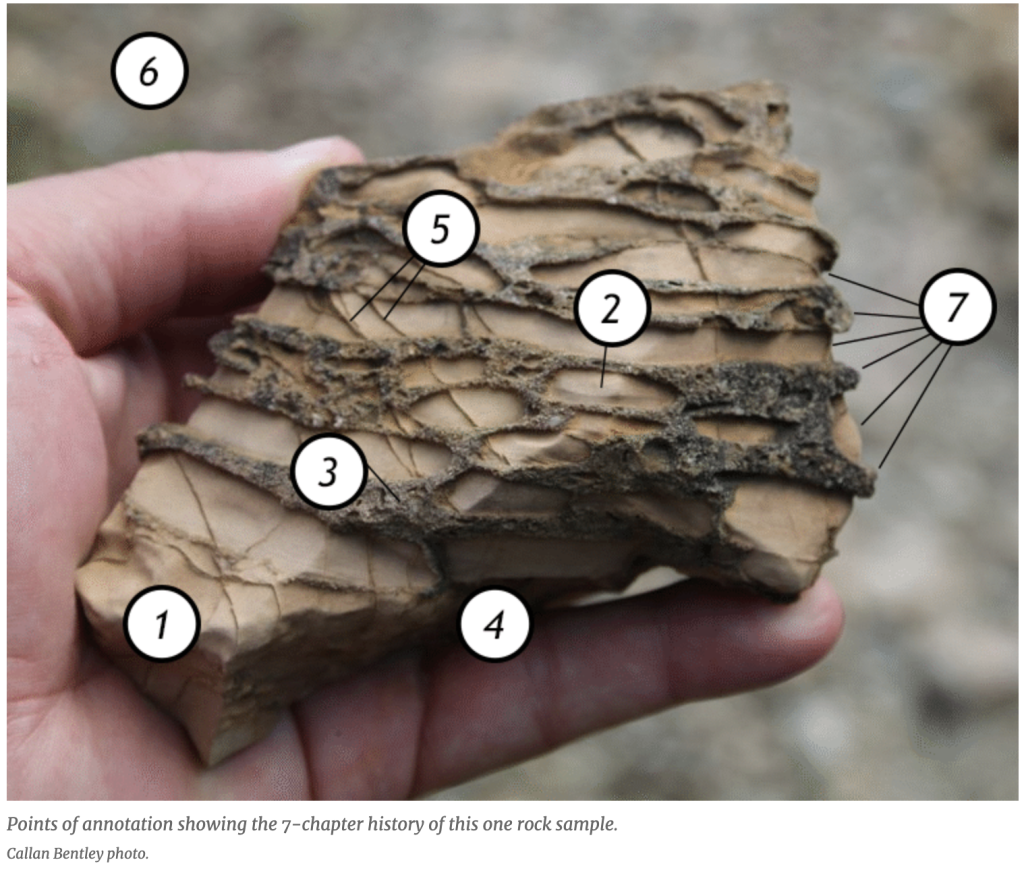Stories from Stone
Callan Bentley, Karen Layou, Russ Kohrs, Shelley Jaye, Matt Affolter, and Brian Ricketts and Charlene Estrada
The most common question I get as a geologist is, “What is this?” People not only want to know the name of a rock but also what it MEANS to be that rock.

This chunk of rock contains features that we can translate into information. The variety of materials it is made from, how those materials are arranged, other features that cut across them, and the shape of the sample all convey information about past processes and circumstances. What would it take to make a rock just like this one? Why does it exist in this particular way?
Let’s translate:
Step one is identifying the materials within the rock.
- Smooth, tan limestone
- Fragments of the same limestone
- Quartz sand surrounding the fragments
- …..
- Quartz veins: typically occurs underground when heat is present
- …..
- …..
Step two is determining what those materials imply about how they formed.
- Limestone: deposited in a calm, water environment – typically an ocean
- Fragments: pieces were ripped up an energetic event
- Quartz sand: the same event that ripped up (2) also moved the quartz sand
- …..
- Quartz veins: typically occurs underground when heat is present
- …..
- …..
Step three is looking at what mountain building/rock-forming events occurred.
- …..
- …..
- …..
- buried and turned to rock
- …..
- uplifted to be exposed at the Earth’s surface
- piece is eroded away to give it the distinctive texture (different materials weather differently)
Then we put it all together:
A smooth, tan limestone (1) was deposited in a calm, water environment. A storm event, perhaps a hurricane, ripped up fragments (2) and quartz sand (3) from the ocean floor. These sediments were buried over time and eventually turned into rock, a process called lithification (4). They were buried deeply enough with mountain building forces that the rocks were fractured, and quartz filled the small cracks (5). The rock was eventually uplifted to the surface (6), and a piece broke off. That piece then weathered differently (7) based on the materials it was made of to look the way it does today.
Whew. That was a lot. To understand all of this, we must build the skills to identify the rock and tell the story.


